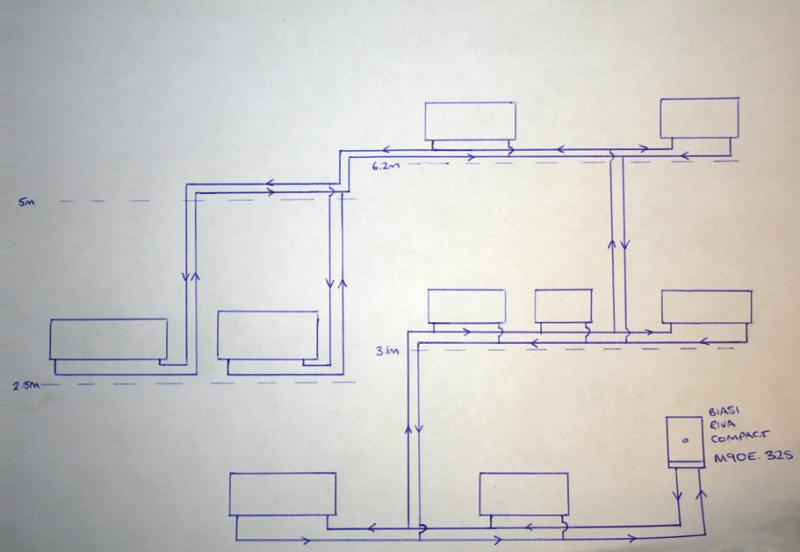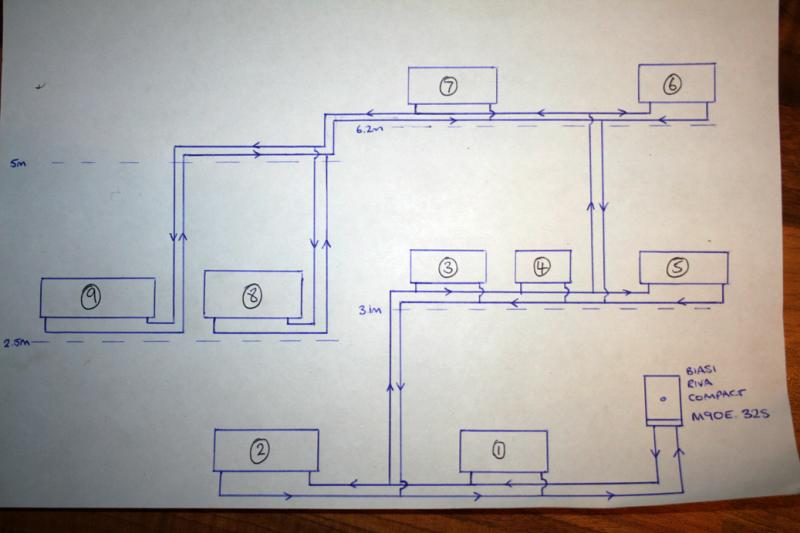- Joined
- 23 Aug 2007
- Messages
- 88
- Reaction score
- 0
- Country

Hello!
I've just installed a new central heating system. Due to the wierd and complicated natuire of our building, the route for the pipework is pretty strange (see the diagram below).
I set it running yesterday and started balancing it. The first 7 radiators are heating fine but 8 and 9 aren't heating at all. In fact, the flow pipe just beyond the 7th radiator isn't even hot. The first seven radiators have had the LSVs altered to reduce the flow and the last two are fully open.
Can anyone tell me what's happening here and what I can do to help it?
Many, many thanks in advance!
I've just installed a new central heating system. Due to the wierd and complicated natuire of our building, the route for the pipework is pretty strange (see the diagram below).
I set it running yesterday and started balancing it. The first 7 radiators are heating fine but 8 and 9 aren't heating at all. In fact, the flow pipe just beyond the 7th radiator isn't even hot. The first seven radiators have had the LSVs altered to reduce the flow and the last two are fully open.
Can anyone tell me what's happening here and what I can do to help it?
Many, many thanks in advance!



